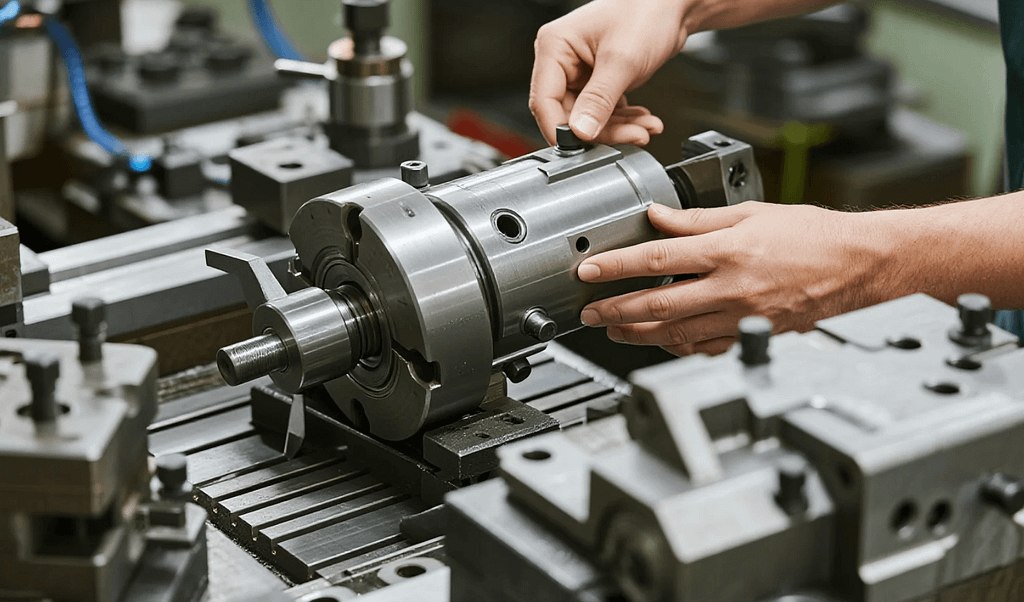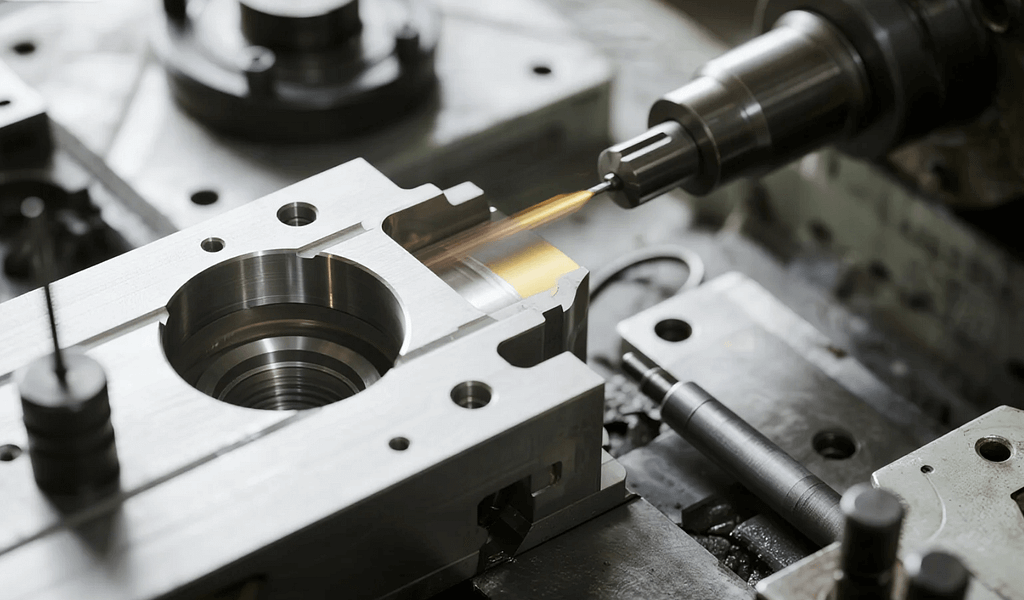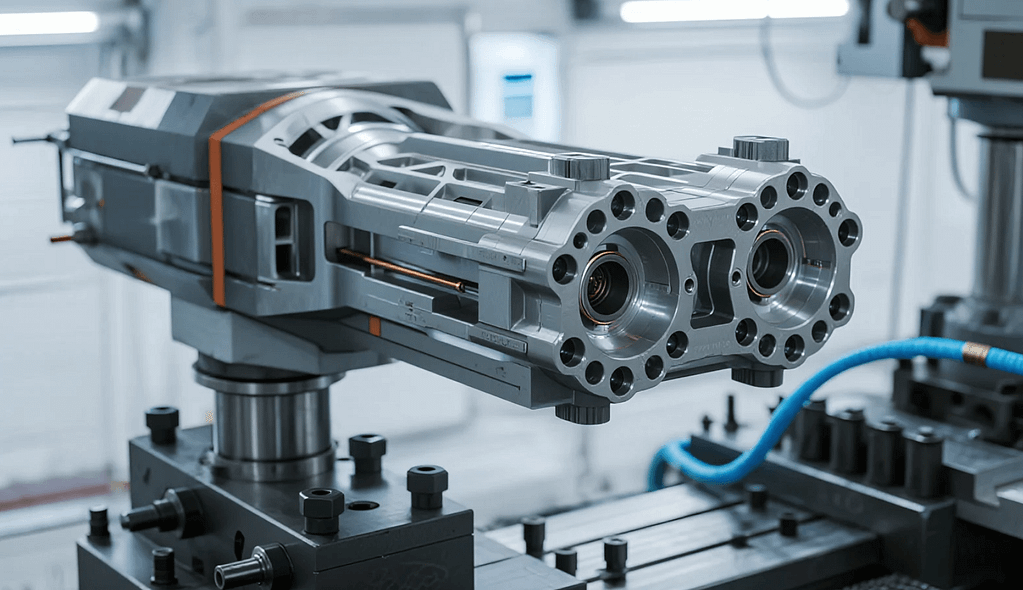Aerospace machining is more than just cutting metal; it is a discipline of unparalleled precision and complexity that underpins the safety and performance of every aircraft and spacecraft in existence. For those in the precision manufacturing services industry, understanding this specialized field is paramount. It’s about taking raw materials—often exotic and challenging to work with—and transforming them into components that can withstand extreme conditions, from the vacuum of space to the immense pressures of atmospheric flight. This article explores the intricate world of aerospace machining, detailing its unique demands, key processes, and the critical role it plays in an industry where there is absolutely no room for error.
The Unique Demands of Aerospace Manufacturing

Unlike general manufacturing, the aerospace sector operates under a strict set of regulations and demands that dictate every aspect of the machining process. The stakes are incredibly high, as the failure of a single component can have catastrophic consequences. As a result, every part must be manufactured to exacting specifications, often with tolerances measured in micrometers.
Materials That Defy Convention
One of the first things to consider in aerospace machining is the material. Traditional metals are often insufficient for the extreme temperatures, stresses, and corrosive environments found in flight. Therefore, manufacturers commonly work with high-performance alloys. Titanium, for example, is highly valued for its exceptional strength-to-weight ratio and corrosion resistance, making it ideal for airframes and engine components. However, it’s notoriously difficult to machine due to its low thermal conductivity, which causes heat to build up at the cutting edge.
Inconel, a nickel-based superalloy, is another workhorse of the aerospace industry. It can maintain its strength at incredibly high temperatures, making it indispensable for jet engine components like turbine blades and combustion liners. Yet, its hardness and tendency to work-harden during machining present significant challenges, requiring specialized tools and slower cutting speeds.
Finally, aluminum alloys remain a staple, especially for structural components where weight reduction is a primary concern. While easier to machine than titanium or Inconel, these alloys still require precise control to achieve the necessary surface finish and dimensional accuracy.
The Precision Behind the Parts: Key Machining Processes

The processes used in aerospace machining are a step beyond standard manufacturing techniques, often leveraging multi-axis CNC machines and advanced tooling to achieve the required complexity and accuracy.
Multi-Axis CNC Machining
Modern aerospace components are often complex, with intricate geometries that are impossible to create with traditional three-axis machining. This is where 5-axis and even 9-axis CNC machines become essential. These machines can move a cutting tool along multiple axes simultaneously, allowing them to mill complex, contoured surfaces in a single setup. This not only improves efficiency but also ensures that the final part is produced with the highest possible accuracy and integrity, free from the stresses that might be introduced by re-fixturing the workpiece.
High-Speed Machining (HSM)
High-speed machining is a technique that involves using high spindle speeds and feed rates with a low depth of cut. This approach is particularly effective with aluminum, as it allows for rapid material removal while maintaining a good surface finish and reducing heat buildup. This is critical for achieving the strict surface finish requirements of aerospace components, which are often designed to minimize drag and improve fuel efficiency.
The Role of Quality Control and Metrology
What truly sets aerospace manufacturing apart is the rigorous focus on quality control. A part is only as good as the measurements that verify its accuracy. For this reason, cutting-edge metrology equipment is a non-negotiable part of the process. Coordinate Measuring Machines (CMMs) are used to inspect parts with incredible precision, ensuring that every dimension, angle, and contour is within the specified tolerance. Furthermore, non-destructive testing (NDT) methods like ultrasonic and magnetic particle inspection are used to check for internal flaws or cracks that could compromise the component’s structural integrity during flight. This holistic approach ensures that every single part meets the industry’s uncompromising safety standards.
Applications: Where Aerospace Machining Comes to Life

The products of aerospace machining are found in every corner of the aerospace industry, from commercial airliners to military jets and satellites.
Airframe and Structural Components
The skeleton of an aircraft—the fuselage, wings, and landing gear—is composed of thousands of precisely machined parts. These components, often made from titanium or aluminum alloys, must be strong enough to withstand the immense forces of takeoff, turbulence, and landing, while being as lightweight as possible to maximize fuel efficiency.
Engine Parts and Propulsion Systems
The heart of any aircraft is its engine, and the parts that make it run are among the most difficult to manufacture. Turbine blades, for instance, are subjected to extreme temperatures and rotational speeds. They are typically machined from high-performance superalloys like Inconel, and their intricate, aerodynamic shapes must be manufactured with perfect precision to ensure optimal performance and safety.
Space and Satellite Components
The demands of space travel are even more rigorous. Satellite components, for example, must not only be incredibly lightweight but also capable of surviving the vacuum of space and massive temperature fluctuations. Here, aerospace machining is used to create delicate yet robust parts for everything from propulsion systems to communication antennae. The materials and processes are chosen not only for their strength but for their ability to withstand radiation and outgassing in a vacuum.
The Future of Aerospace Machining
As the aerospace industry continues to innovate, so too must the field of precision manufacturing. The future of aerospace machining is likely to be shaped by new technologies like additive manufacturing (3D printing) and advancements in automation. While additive manufacturing offers new possibilities for creating complex geometries and reducing material waste, traditional machining will always be necessary for achieving the tight tolerances and superior surface finishes required for mission-critical components. The combination of these technologies, along with continued advancements in tooling and materials, will ensure that the industry continues to push the boundaries of what is possible in the skies and beyond.
Frequently Asked Questions (FAQs)
Q: What is the most challenging material to machine in the aerospace industry? A: While many materials are difficult to work with, titanium and nickel-based superalloys like Inconel are often considered the most challenging. Their high strength and low thermal conductivity can lead to rapid tool wear and heat buildup, requiring specialized equipment and techniques.
Q: Why is multi-axis machining so important for aerospace parts? A: Multi-axis machining allows for the creation of complex, curved, and intricate geometries in a single setup. This is crucial for producing parts like turbine blades and structural components that have non-linear shapes. It also improves accuracy and reduces the risk of errors that can occur when re-fixturing a workpiece.
Q: How does quality control in aerospace machining differ from other industries? A: Quality control in aerospace is significantly more rigorous. It involves not only verifying dimensions with highly precise instruments like CMMs but also using non-destructive testing (NDT) to check for internal defects. The documentation and traceability for every part are also extremely detailed to ensure compliance with strict industry regulations.